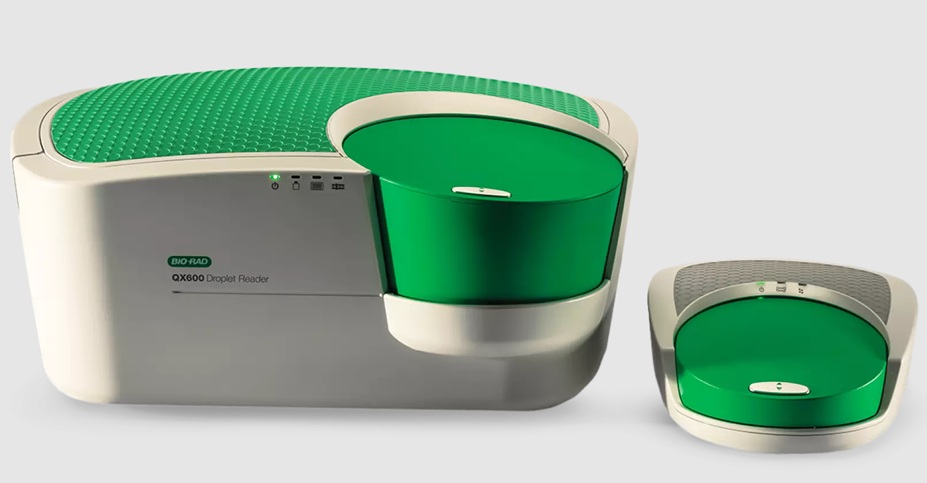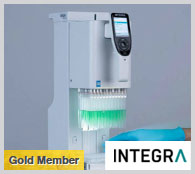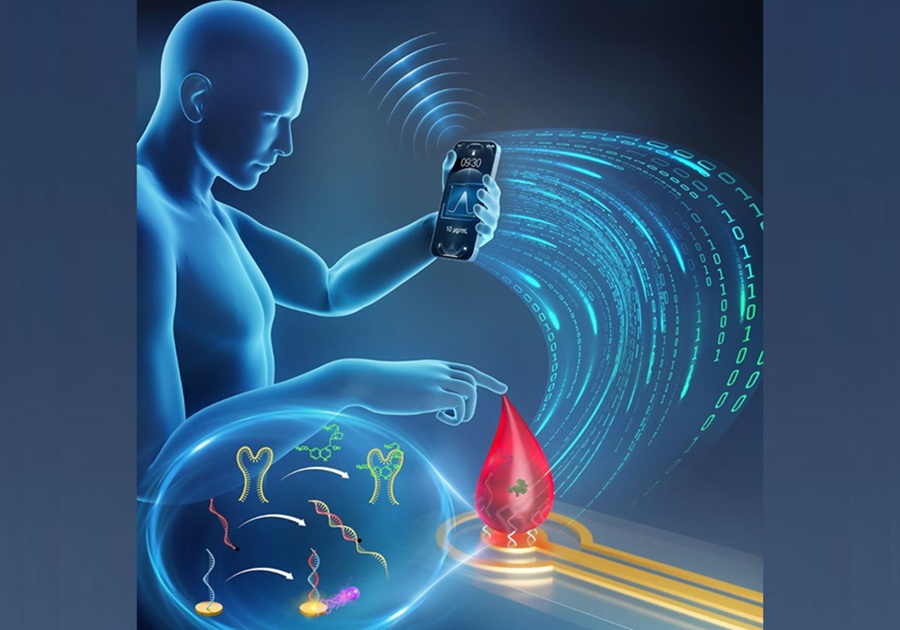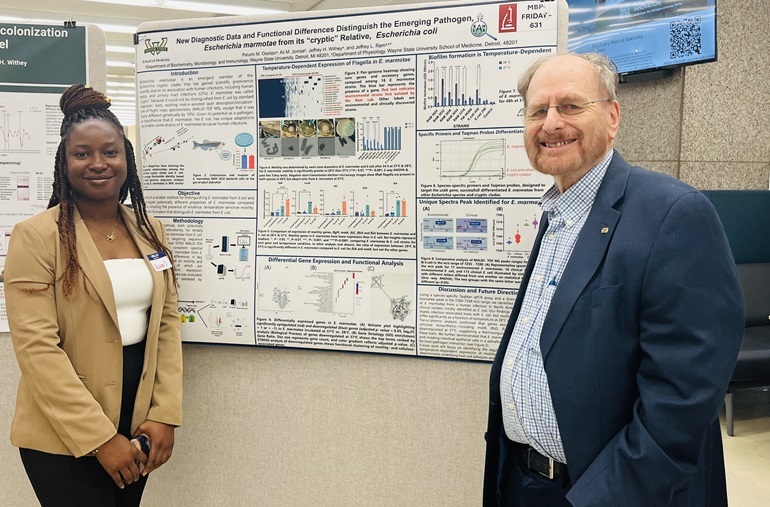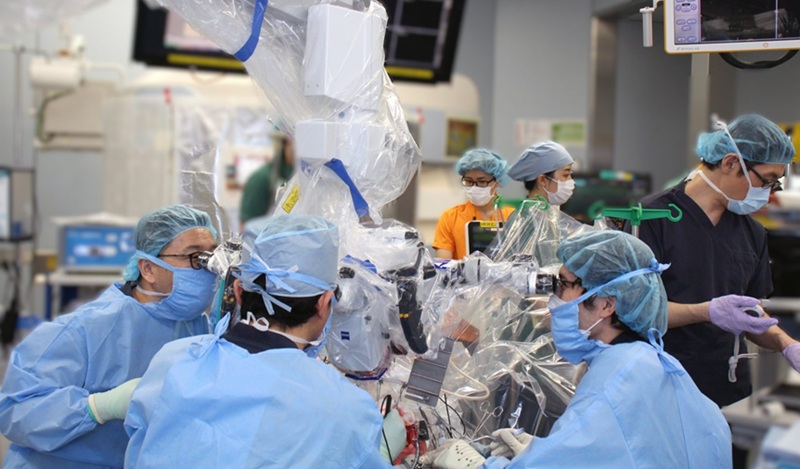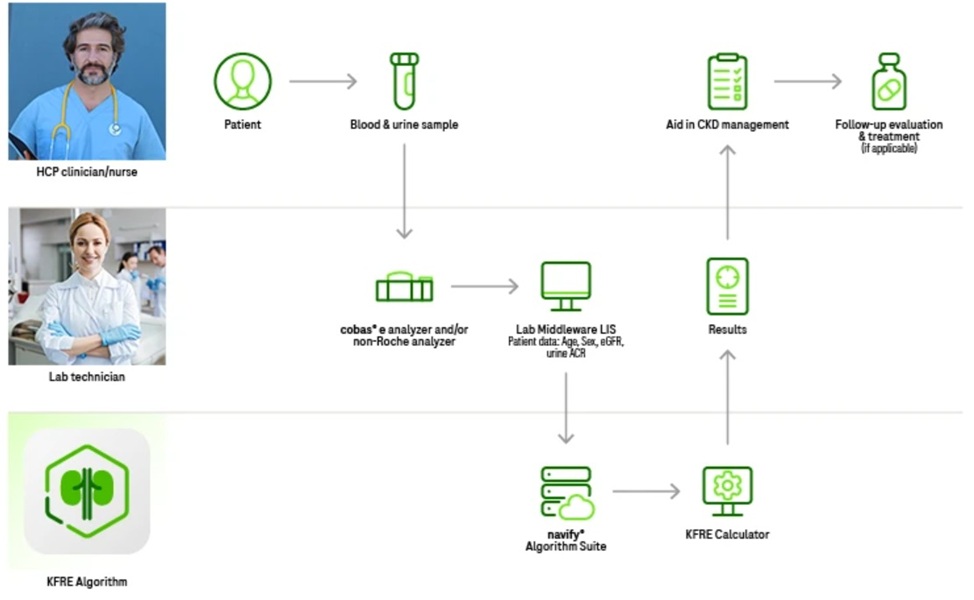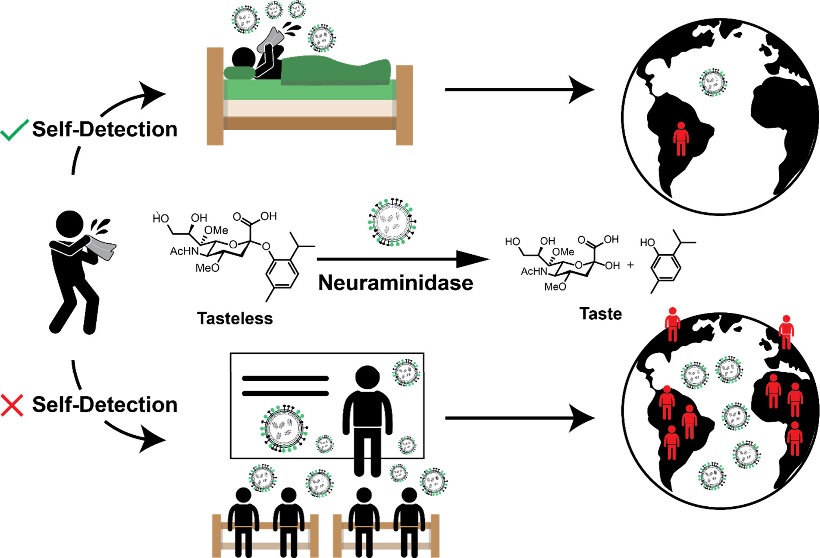Rapid Test Distinguishes Types of Malaria
|
By LabMedica International staff writers Posted on 08 Sep 2017 |
![Image: The dual-band (histidine-rich protein-2/pan-lactate dehydrogenase [HRP2/pLDH]) rapid diagnostic test (RDT) to differentiate uncomplicated from severe malaria (Photo courtesy of Standard Diagnostics). Image: The dual-band (histidine-rich protein-2/pan-lactate dehydrogenase [HRP2/pLDH]) rapid diagnostic test (RDT) to differentiate uncomplicated from severe malaria (Photo courtesy of Standard Diagnostics).](https://globetechcdn.com/mobile_labmedica/images/stories/articles/article_images/2017-09-08/RLJ-298.jpg)
Image: The dual-band (histidine-rich protein-2/pan-lactate dehydrogenase [HRP2/pLDH]) rapid diagnostic test (RDT) to differentiate uncomplicated from severe malaria (Photo courtesy of Standard Diagnostics).
Malaria is a leading cause of death for children living in Sub-Saharan Africa and many children in rural areas seek care at local community health clinics, but these clinics lack reliable tests to distinguish severe and uncomplicated malaria.
The diagnosis of malaria was traditionally was made using Giemsa-stained blood smears, but rapid diagnostic tests are now widely used. The potential of using a low-cost, routinely available rapid diagnostic test to distinguish between severe and uncomplicated malaria in children has been investigated.
Scientists at the University of North Carolina at Chapel Hill (NC, USA) and their colleagues performed a prospective, observational cohort study, to assess the accuracy of a dual-band (histidine-rich protein-2/pan-lactate dehydrogenase [HRP2/pLDH]) rapid diagnostic test (RDT) to differentiate uncomplicated from severe malaria. A total of 2,678 children with fever from Western Uganda underwent testing for malaria using a rapid diagnostic test.
The scientist found that nearly half tested positive for malaria and 83 satisfied criteria for severe malaria. The sensitivity and specificity of the rapid diagnostic test for detecting severe malaria was 97.6% and 75.6%, respectively. The test was especially sensitive for children less than five years of age. Knowing when a child is suffering from severe malaria allows for a referral to a health center better equipped to handle the disease's grave manifestations. An HRP2+/pLDH+ result was significantly more sensitive (97.6% versus 68.7%) for the detection of severe malaria compared to algorithms that incorporate screening for danger signs.
The authors concluded that a positive dual-antigen (HRP2/pLDH) RDT has higher sensitivity than the use of clinical manifestations to detect severe malaria, making it a promising tool in the triage of children with malaria in low-resource settings. Ross Boyce, MD, MSc, the lead author of the study said, “Rapid diagnostic tests have been around for a while, and are generally considered standard of care in most malaria-endemic settings. However, what we've done is show that these relatively simple tests can be used in new ways to provide important information beyond just a positive or negative result.” The study was published on August 24, 2017, in the journal Clinical Infectious Diseases.
Related Links:
University of North Carolina at Chapel Hill
The diagnosis of malaria was traditionally was made using Giemsa-stained blood smears, but rapid diagnostic tests are now widely used. The potential of using a low-cost, routinely available rapid diagnostic test to distinguish between severe and uncomplicated malaria in children has been investigated.
Scientists at the University of North Carolina at Chapel Hill (NC, USA) and their colleagues performed a prospective, observational cohort study, to assess the accuracy of a dual-band (histidine-rich protein-2/pan-lactate dehydrogenase [HRP2/pLDH]) rapid diagnostic test (RDT) to differentiate uncomplicated from severe malaria. A total of 2,678 children with fever from Western Uganda underwent testing for malaria using a rapid diagnostic test.
The scientist found that nearly half tested positive for malaria and 83 satisfied criteria for severe malaria. The sensitivity and specificity of the rapid diagnostic test for detecting severe malaria was 97.6% and 75.6%, respectively. The test was especially sensitive for children less than five years of age. Knowing when a child is suffering from severe malaria allows for a referral to a health center better equipped to handle the disease's grave manifestations. An HRP2+/pLDH+ result was significantly more sensitive (97.6% versus 68.7%) for the detection of severe malaria compared to algorithms that incorporate screening for danger signs.
The authors concluded that a positive dual-antigen (HRP2/pLDH) RDT has higher sensitivity than the use of clinical manifestations to detect severe malaria, making it a promising tool in the triage of children with malaria in low-resource settings. Ross Boyce, MD, MSc, the lead author of the study said, “Rapid diagnostic tests have been around for a while, and are generally considered standard of care in most malaria-endemic settings. However, what we've done is show that these relatively simple tests can be used in new ways to provide important information beyond just a positive or negative result.” The study was published on August 24, 2017, in the journal Clinical Infectious Diseases.
Related Links:
University of North Carolina at Chapel Hill
Latest Microbiology News
- Fast Noninvasive Bedside Test Uses Sugar Fingerprint to Detect Fungal Infections
- Rapid Sepsis Diagnostic Device to Enable Personalized Critical Care for ICU Patients
- Microfluidic Platform Assesses Neutrophil Function in Sepsis Patients
- New Diagnostic Method Confirms Sepsis Infections Earlier
- New Markers Could Predict Risk of Severe Chlamydia Infection
- Portable Spectroscopy Rapidly and Noninvasively Detects Bacterial Species in Vaginal Fluid
- CRISPR-Based Saliva Test Detects Tuberculosis Directly from Sputum
- Urine-Based Assay Diagnoses Common Lung Infection in Immunocompromised People
- Saliva Test Detects Implant-Related Microbial Risks
- New Platform Leverages AI and Quantum Computing to Predict Salmonella Antimicrobial Resistance
- Early Detection of Gut Microbiota Metabolite Linked to Atherosclerosis Could Revolutionize Diagnosis
- Viral Load Tests Can Help Predict Mpox Severity
- Gut Microbiota Analysis Enables Early and Non-Invasive Detection of Gestational Diabetes
- Credit Card-Sized Test Boosts TB Detection in HIV Hotspots
- Fecal Metabolite Profiling Predicts Mortality in Critically Ill Patients
- Portable Molecular POC System Rules Out UTIs in Just 35 Minutes
Channels
Clinical Chemistry
view channel
VOCs Show Promise for Early Multi-Cancer Detection
Early cancer detection is critical to improving survival rates, but most current screening methods focus on individual cancer types and often involve invasive procedures. This makes it difficult to identify... Read more
Portable Raman Spectroscopy Offers Cost-Effective Kidney Disease Diagnosis at POC
Kidney disease is typically diagnosed through blood or urine tests, often when patients present with symptoms such as blood in urine, shortness of breath, or weight loss. While these tests are common,... Read moreMolecular Diagnostics
view channel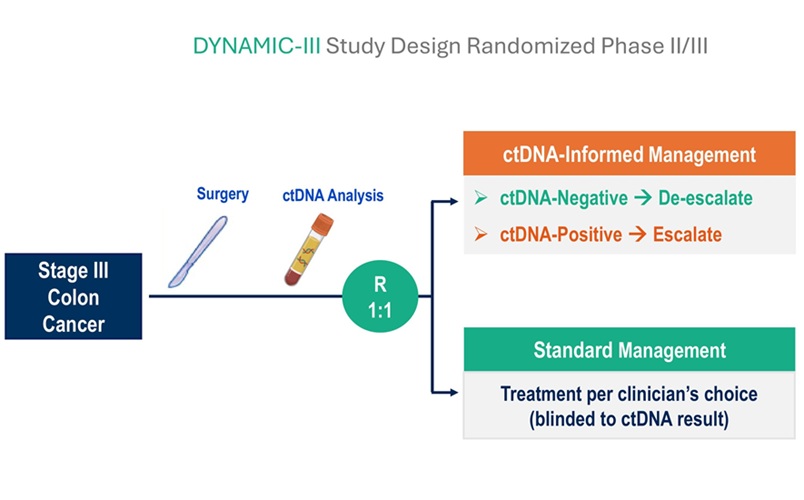
ctDNA Blood Test to Help Personalize Postsurgical Colon Cancer Treatment
For patients with Stage 3 colon cancer, current chemotherapy approaches are highly toxic and lack personalization. Standard treatment involves months of dual-agent chemotherapy, which often causes serious... Read more
AI Powered Blood Test Predicts Suicide Risk in Bipolar Patients
Suicide remains one of the gravest risks for individuals with bipolar disorder, with nearly 40% attempting suicide and up to 10% dying by it. Despite these alarming statistics, clinicians have lacked reliable... Read moreHematology
view channel
Viscoelastic Testing Could Improve Treatment of Maternal Hemorrhage
Postpartum hemorrhage, severe bleeding after childbirth, remains one of the leading causes of maternal mortality worldwide, yet many of these deaths are preventable. Standard care can be hindered by delays... Read more
Pioneering Model Measures Radiation Exposure in Blood for Precise Cancer Treatments
Scientists have long focused on protecting organs near tumors during radiotherapy, but blood — a vital, circulating tissue — has largely been excluded from dose calculations. Each blood cell passing through... Read more
Platelets Could Improve Early and Minimally Invasive Detection of Cancer
Platelets are widely recognized for their role in blood clotting and scab formation, but they also play a crucial role in immune defense by detecting pathogens and recruiting immune cells.... Read more
Portable and Disposable Device Obtains Platelet-Rich Plasma Without Complex Equipment
Platelet-rich plasma (PRP) plays a crucial role in regenerative medicine due to its ability to accelerate healing and repair tissue. However, obtaining PRP traditionally requires expensive centrifugation... Read moreImmunology
view channel
Molecular Microscope Diagnostic System Assesses Lung Transplant Rejection
Lung transplant recipients face a significant risk of rejection and often require routine biopsies to monitor graft health, yet assessing the same biopsy sample can be highly inconsistent among pathologists.... Read more
Blood Test Tracks Treatment Resistance in High-Grade Serous Ovarian Cancer
High-grade serous ovarian cancer (HGSOC) is often diagnosed at an advanced stage because it spreads microscopically throughout the abdomen, and although initial surgery and chemotherapy can work, most... Read more
Luminescent Probe Measures Immune Cell Activity in Real Time
The human immune system plays a vital role in defending against disease, but its activity must be precisely monitored to ensure effective treatment in cancer therapy, autoimmune disorders, and organ transplants.... Read more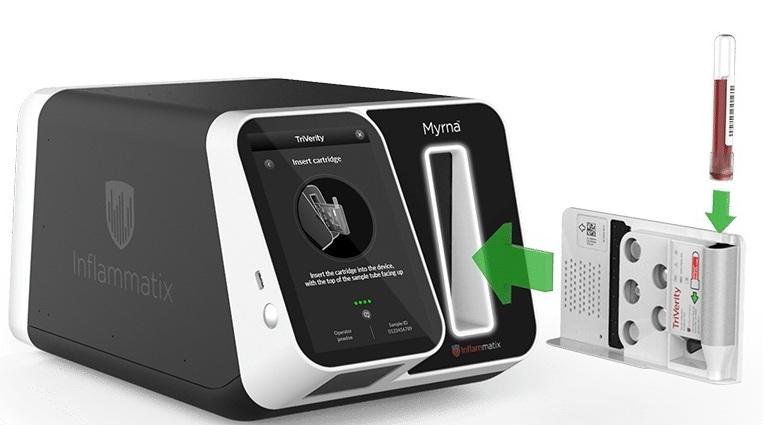
Blood-Based Immune Cell Signatures Could Guide Treatment Decisions for Critically Ill Patients
When a patient enters the emergency department in critical condition, clinicians must rapidly decide whether the patient has an infection, whether it is bacterial or viral, and whether immediate treatment... Read morePathology
view channel
AI Pathology Analysis System Delivers Comprehensive Cancer Diagnosis
Accurate and timely cancer diagnosis is often limited by complex manual pathology workflows and lengthy turnaround times. Traditional pathology relies heavily on human interpretation, which can delay treatment... Read more
AI Improves Cervical Cancer Screening in Low-Resource Settings
Access to cervical cancer screening in low- and middle-income countries remains limited, leaving many women without early detection for this life-threatening disease. The lack of access to laboratories,... Read moreTechnology
view channel
Viral Biosensor Test Simultaneously Detects Hepatitis and HIV
Globally, over 300 million people live with Hepatitis B and C, and 40 million with HIV, according to WHO estimates. Diagnosing bloodborne viruses such as HIV and Hepatitis B and C remains challenging in... Read more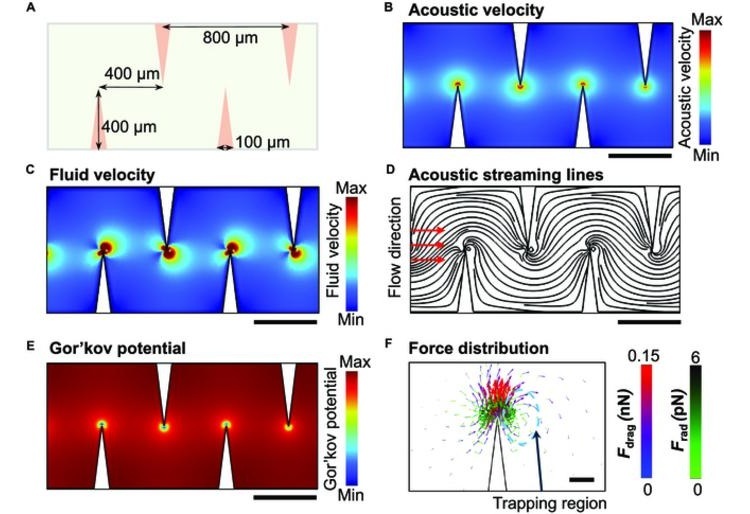
Acoustofluidic Device to Transform Point-Of-Care sEV-Based Diagnostics
Rapid and sensitive detection of small extracellular vesicles (sEVs)—key biomarkers in cancer and organ health monitoring—remains challenging due to the need for multiple preprocessing steps and bulky... Read moreIndustry
view channel
Advanced Instruments Merged Under Nova Biomedical Name
Advanced Instruments (Norwood, MA, USA) and Nova Biomedical (Waltham, MA, USA) are now officially doing business under a single, unified brand. This transformation is expected to deliver greater value... Read more